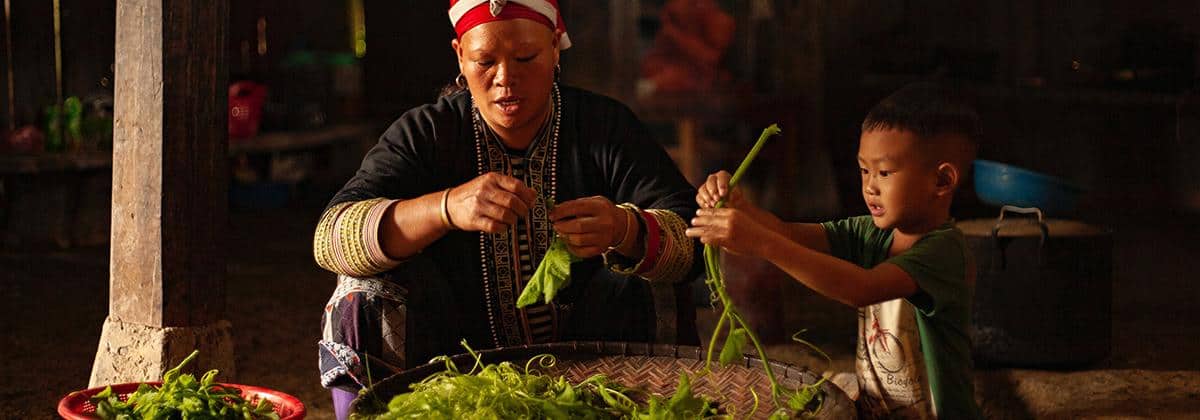COVID-19’s long shadow darkens the future of Southeast Asia’s food security
- From
-
Published on
05.05.20
- Impact Area

5 May 2020, Los Banos, Philippines/Bangkok, Thailand — As COVID-19 continues to threaten the lives and livelihoods of millions of people in Southeast Asia, additional concerns are being raised about the longer term health of the sub-region’s food systems – a complex matrix involving farmers, fishers, labourers, drivers, cold storage, food processors, retailers, and consumers.
From small village markets to the large grocery store chains in densely populated cities like Bangkok, Manila, and Jakarta, food appears plentiful enough and the initial panic buying has subsided. Indeed, most countries have recognized the need to keep food and agricultural supply chains open, and have taken action to achieve that.
However, the impact of lockdowns and the interruption of the free flow of other goods and services – combined with the lack of available labour – has raised the specter of longer term disruptions to daily life, livelihoods, and cash on hand. Will that cause food to rot in the fields? Will there be enough food? Will the price of food dramatically increase, hurting the poor and marginalized even more? These uncertainties are the main causes of concern.
Collaborating to find answers and a way forward
In order to better understand the present situation of our food systems in the face of COVID-19, and to predict the ongoing and future impact on food systems in Southeast Asia, the UN’s Food and Agriculture Organization (FAO) and the International Rice Research Institute (IRRI) today convened a webinar on “The Future of Food Systems in Southeast Asia post COVID-19.”
The webinar examined the challenges to the subregion’s food systems amid COVID-19, the future of food systems in Southeast Asia after the pandemic, and discussed potential measures to safeguard food systems.
In his opening message, Dr. Matthew Morell, IRRI Director General, highlighted…
Related news
-

From Intervention to Transformation: How AKILIMO Continues to Shape Ogun State's Agricultural Future and Success
Sehlule Muzata04.11.25-
Climate adaptation & mitigation
-
Environmental health & biodiversity
-
Food security
-
Gender equality, youth & social inclusion
When agricultural innovation endures beyond a project's lifespan, it symbolizes true transformation.…
Read more -
-

Less Is More in India’s Upcoming Rice Breeding Strategy
International Rice Research Institute (IRRI)04.11.25-
Food security
Hyderabad, India (25 October 2025)—India is redefining how rice breeding responds to consumer and …
Read more -
-

SOILutions for Security: CGIAR at the 2025 Borlaug Dialogue
Multifunctional Landscapes Science Program22.10.25-
Biodiversity
-
Environmental health
-
Environmental health & biodiversity
-
Food security
-
Nutrition
From October 21–23, CGIAR will join global partners in Des Moines, Iowa for the 2025…
Read more -
